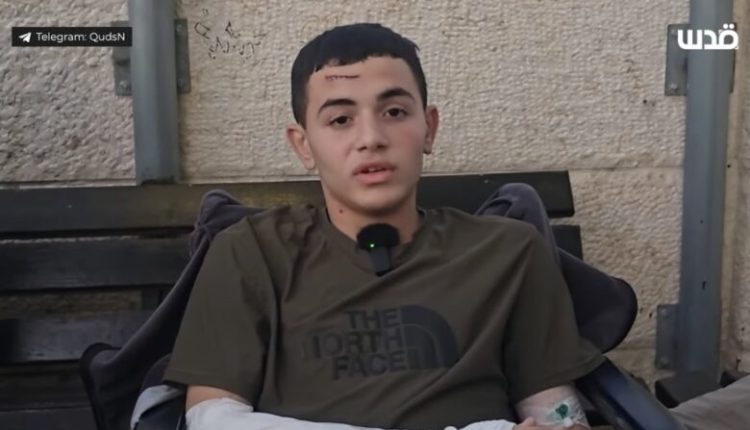An Army Whose Hobby Is Hunting Children…
I was abroad when I learned that my 14-year-old nephew, Ahmad, had been shot four times by soldiers from just a few meters away in our hometown of Tubas, in the northern West Bank.
I tried to imagine the scene: how could a small boy endure that gunfire? And how could his soul ever recover from an ordeal that left him closer to death than to life?
How Did This Happen?
Ahmad is a school student. After classes, he helps his father, who sells coffee from a wooden kiosk in the town’s market. That afternoon, his father went home for a short rest, leaving Ahmad in charge of the kiosk.
As usual, the army raided the area, and clashes erupted. His father called him, urging him to leave the kiosk and go home, fearing for his safety. He offered to stay on the phone, guiding Ahmad through a side street away from the soldiers.
Ahmad walked with a friend, listening to his father’s instructions. Suddenly, he found himself face to face with a group of soldiers. They ordered him to stop. Not knowing what to do, he tried to run. After a few steps, the soldiers opened fire.
Bullets struck both his arms and legs. One shattered the bone in his left ankle, ensuring he will never walk normally again or play sports that require running. Another tore through the main artery in his thigh, the so-called “life artery,” whose rupture can cause death from severe bleeding. A third bullet fractured his arm and damaged the bone severely. A fourth pierced the muscle of his thigh.
When I visited Ahmad at Ibn Sina Hospital in Jenin, he told me he had fallen to the ground, trembling violently, certain he was dying. One of the soldiers approached and asked him in Arabic, “How old are you?” Ahmad couldn’t speak. The soldier fired two shots into the air above him. Terrified, Ahmad stammered, “Fourteen… or fifteen?” The soldier then fired another shot between his thighs while he lay bleeding. The bullet shattered into fragments, striking multiple parts of his body. Then he lost consciousness.
The soldiers left him to bleed. After they disappeared, an ambulance arrived and rushed him to the only hospital in Tubas.
Doctors said Ahmad had lost nearly all his blood. They transfused 15 units into his frail body, repaired the severed artery, and began the painstaking work of reconstructing his shattered limbs. He survived.
But survival does not erase the trauma. His physical recovery will take months. His psychological wounds are even deeper. Nightmares haunt him both awake and asleep. He sleeps little, and when he does, he dreams of prisons and death.
We are grateful to God that Ahmad survived. We are thankful to the doctors, and to the scores of people from Tubas who came to check on him.
For Palestinians in the West Bank, this is not an isolated event. Dozens of similar (and worse) incidents occur regularly: settlers assault residents in their homes and on their livestock, animals are beaten to death, and many shootings are captured on video.
I share Ahmad’s story so the can see what Israeli soldiers and settlers are doing in the West Bank, and how they treat children, farmers, and ordinary passersby. Maybe then, someone will finally say: Enough.
I write these words with the voice of the Israeli politician, Yair Golan, echoing in my ears, when he described his own government as “a government whose hobby is killing Palestinian children.”

